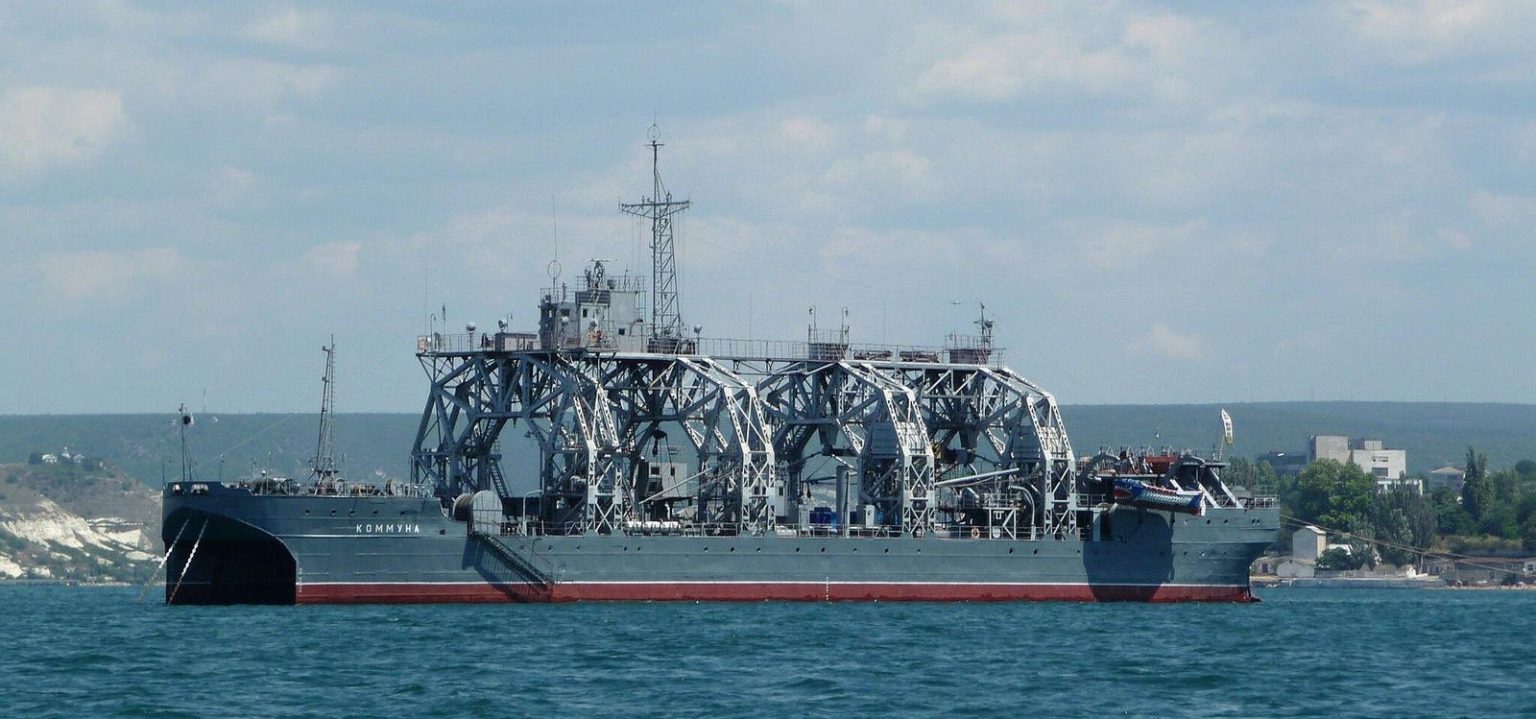The Russian navy rescue ship Kommuna, which has been in service since 1913 and has survived two world wars, recently survived a Ukrainian missile raid on the Russian Black Sea Fleet’s anchorage in Sevastopol. Satellite imagery showed no major damage to the ship’s hull, deck, or superstructure, although it is possible that there was internal damage that is difficult to verify. The attack serves as a reminder to Russian sailors that they are not entirely safe, as the Ukrainians may have used their newest Neptune cruise missiles, with many more of these missiles on the way.
The Ukrainian military has targeted the Black Sea Fleet multiple times during Russia’s 26-month war on Ukraine, damaging or destroying a number of large ships, air bases, air defenses, and command posts. The Neptune cruise missile, a new version of the old Soviet Kh-35, has been the primary weapon used in these attacks. The Neptune was rushed into service when Russia expanded its war in February 2022, and it sank the Black Sea Fleet flagship, Moskva, in April of that year. The missile has proven effective, but its limited range has required the Ukrainian navy to launch its attacks from closer distances.
To address this issue, the Luch Design Bureau in Kyiv developed the “Long Neptune,” with an increased range of 200 miles and improved targeting capabilities. The Long Neptune has already been used in successful strikes against Russian targets in Crimea. The increased production of Neptune missiles by Ukraine suggests that more attacks are likely in the future, with the potential for more devastating consequences for the Russian navy and its facilities. The use of these missiles underscores the ongoing conflict between Russia and Ukraine, which shows no signs of abating as it enters its third year.
The possibility of scores or even hundreds of Neptune missiles being available to Ukrainian strike planners poses a significant threat to the Russian Black Sea Fleet and its operations in Crimea. While the recent attack on Kommuna may not have caused severe damage, it is a clear indication that the Ukrainian military is capable of launching successful missile strikes against Russian targets. As the conflict continues to escalate, both sides are likely to seek new ways to gain the upper hand and achieve their strategic objectives.
The ongoing conflict between Russia and Ukraine has led to multiple attacks on the Black Sea Fleet by the Ukrainian military, resulting in significant damage to Russian ships and infrastructure. The development and deployment of the Neptune cruise missile by Ukraine have proven to be an effective weapon in these attacks, with the potential for even greater impact as production increases. The recent strike on Kommuna serves as a reminder of the dangers faced by the Russian navy in the Black Sea and the unpredictability of warfare in the region.
As the conflict between Russia and Ukraine continues to evolve, both sides are likely to pursue new technologies and strategies to gain an advantage over their adversaries. The use of advanced cruise missiles like the Neptune highlights the changing nature of warfare in the region and the potential for significant damage to military assets. The ongoing conflict is a stark reminder of the dangers faced by military personnel and the unpredictability of modern warfare, as both sides seek to gain the upper hand in a protracted and devastating conflict.















